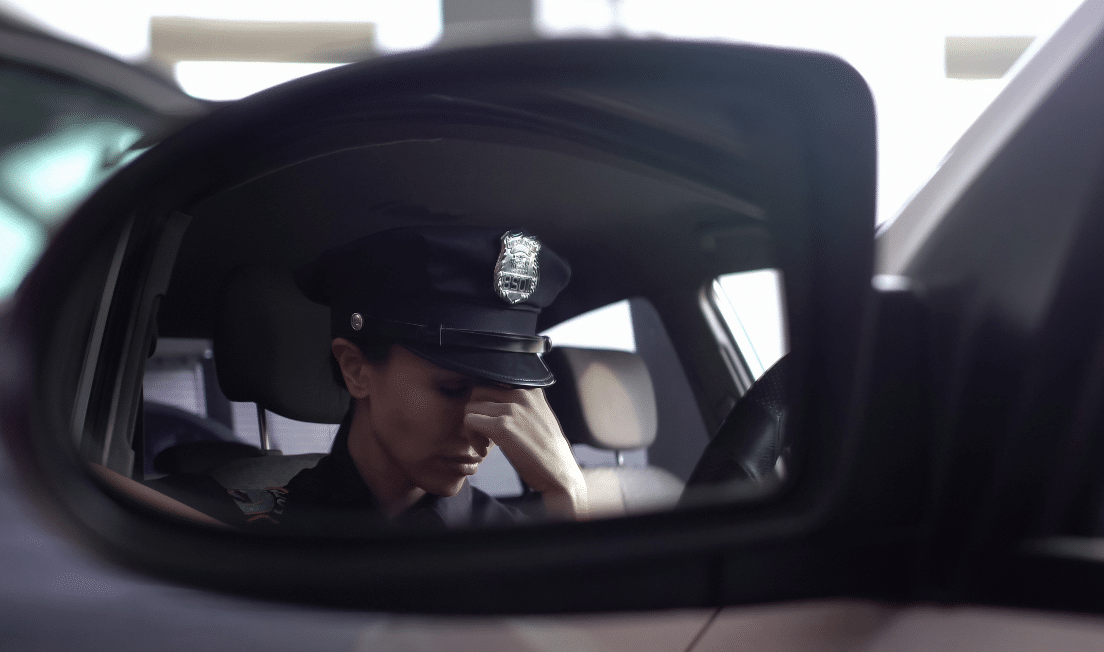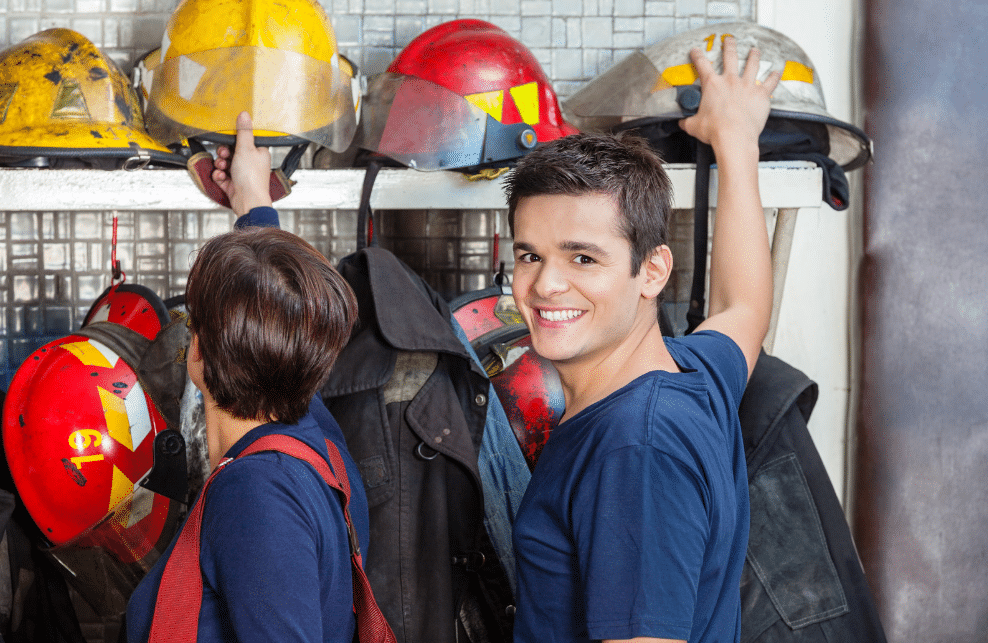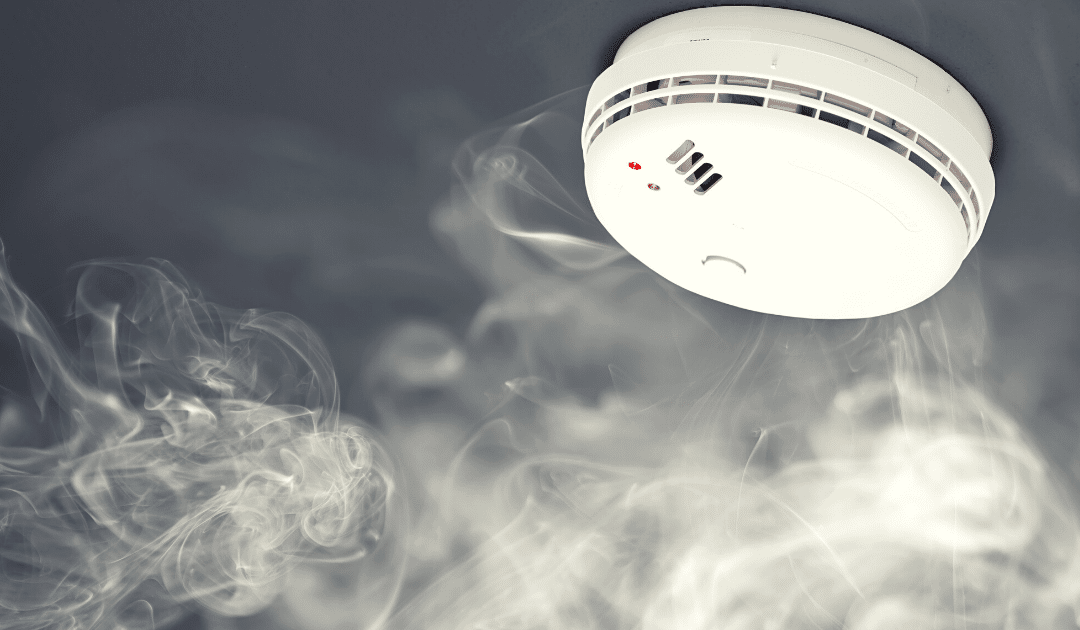
by California Casualty | Firefighters, Safety |
There are many more combustible materials in today’s homes than in years past, which means a spark or small fire can engulf a house in less than five minutes.
Smoke alarms are a critical first line of defense against catastrophic loss. To keep your family and home safe, follow these tips on installing alarms correctly, testing them, and ensuring that they’re properly maintained and cleaned.
Step 1: Installation
First, you should know that there are two types of smoke alarms: ionization and photoelectric. The first is more responsive to flaming fires, the second to smoldering fires. For best protection, use both types or a hybrid of the two. When it comes time to install them, remember to:
-
- Install alarms inside each bedroom as well as outside sleeping areas and on every level of your home, including the basement.
- Choose alarms that display the label of a recognized testing laboratory.
- Install wall-mounted alarms 4 to 12 inches from the ceiling, and ceiling-mounted models at least 4 inches from the closest wall.
- To avoid false alarms, place the units more than 10 feet from cooking appliances and 3 feet from bathrooms (shower steam can trigger them).
- Smoke alarms in the basement should be positioned on the ceiling at the bottom of the stairs leading to the next floor.
- For pitched ceilings, place alarm within 3 feet of the peak but not within the apex.
- Never paint smoke alarms or adhere stickers or decorations, as this can disable them.
- Don’t install alarms near doors, ducts, or windows where drafts might decrease their sensitivity.
- If possible, interconnect your smoke alarms using hard-wiring or wireless technology. This extra safety measure enables all the alarms to sound at once when any single one is triggered. Note that they must be from the same manufacturer.
Step 2: Testing
Be sure to keep the manufacturer’s instructions so you can properly test them and use for reference.
-
- While using ear protection, test alarms at least once a month using the “test” button. This ensures that your alarms have reliable power.
- Never test your alarm with real smoke or exhaust.
- Make sure you know what kind of batteries your smoke alarms have. Some units have non-replaceable 10-year batteries; others have batteries that need to be replaced every 6-12 months. For the latter, always have fresh replacement batteries on hand.
- Always replace batteries following the manufacturer’s instructions. If it specifies a particular battery, use that exact one or the alarm might not work properly.
Step 3: Maintenance & Cleaning
Smoke alarm safety depends on regular maintenance and cleaning. Do the following to ensure yours stay in proper working order.
-
- Maintain a monthly testing schedule and log your maintenance activities, along with any notes.
- If the alarm chirps, that means the battery is low and you should replace it right away.
- Clean alarms by gently vacuuming the outside of the unit with a soft brush attachment. You can also use a can of clean compressed air (sold at office supply stores).
- Never use water, solvents or cleaners on your alarm.
For more tips on home fire safety, be sure to read our Home Fire Safety Tips from Firefighters and check out this handy infographic.
Finally, make sure your family has a fire escape plan in place and that everyone understands and can follow it in an emergency. Use the National Fire Protection Association’s easy-to-use template here.
This article is furnished by California Casualty. We specialize in providing auto and home insurance to educators, law enforcement officers, firefighters, and nurses. Get a quote at 1.866.704.8614 or www.calcas.com.
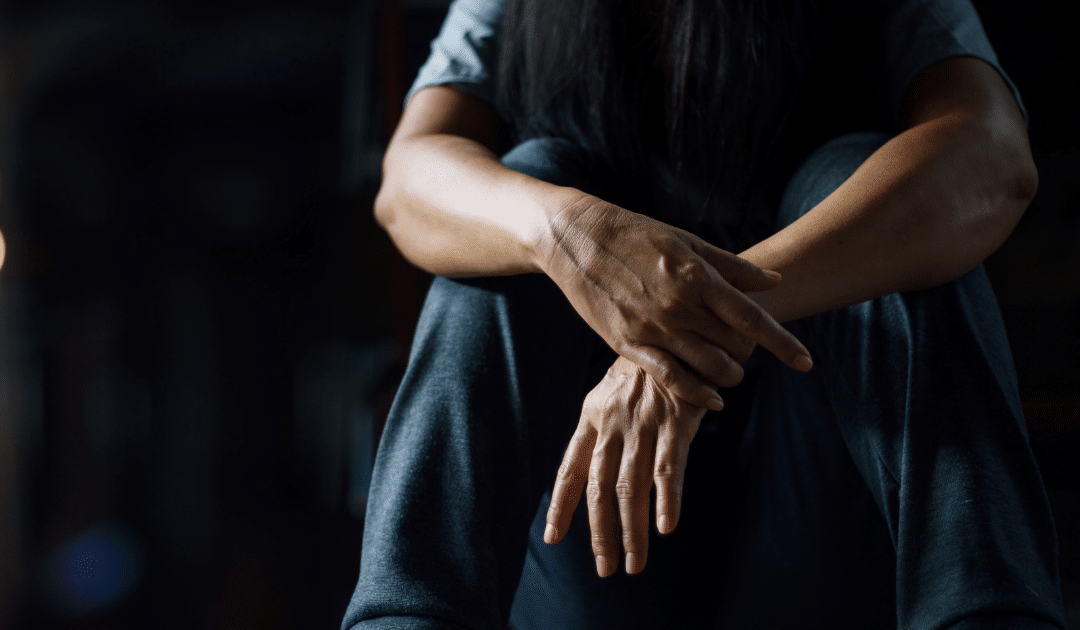
by California Casualty | Firefighters, Peace Officers |
Studies have shown that first responders are at a much greater risk to develop post-traumatic stress disorder than the general public due to their exposure to high levels of physical and emotional stress. Sadly, throughout their career, many first responders will develop anxiety, depression, PTSD, and other mental health issues, that are oftentimes linked to suicide.
Mental health, a once-taboo subject for departments, is now becoming more normalized with the aid of department programs, advocacy campaigns, and initiatives that help educate and bring awareness to PTSD, depression, and other types of mental health issues commonly found in first responders.
September is Suicide Awareness Month. Do your part in helping decrease first responder suicide by learning how to spot the early signs of PTSD in your first responder friends, family members, or colleagues.
Early signs of PTSD to look out for include:
Intrusive Memories
- Memories of the traumatic event
- Flashbacks
- Nightmares or upsetting dreams
- Emotional reactions triggered by a reminder of the traumatic event
Eluding & Avoiding
- Not speaking of the event
- Avoiding people, places, or activities
Behavioral Changes
- Irritability
- Lack of Interest
- Feeling detached
- Memory problems
Physical Reactions
- Easily startled or frightened
- Trouble sleeping and concentrating
- Exhibiting self-destructive behavior
- Always being on guard
Over time, these symptoms can differ and vary in intensity.
If you or someone you know is struggling with any of these signs of PTSD or other mental health issues, you are not alone. Please reach out to a mental health professional. If you do not feel comfortable speaking to a professional, start by reaching out to a close colleague, family member, or friend.
If you are experiencing thoughts of suicide call the National Suicide Prevention Hotline at 1-800-273-8255.
This article is furnished by California Casualty, providing auto and home insurance to educators, law enforcement officers, firefighters, and nurses. Get a quote at 1.866.704.8614 or www.calcas.com.
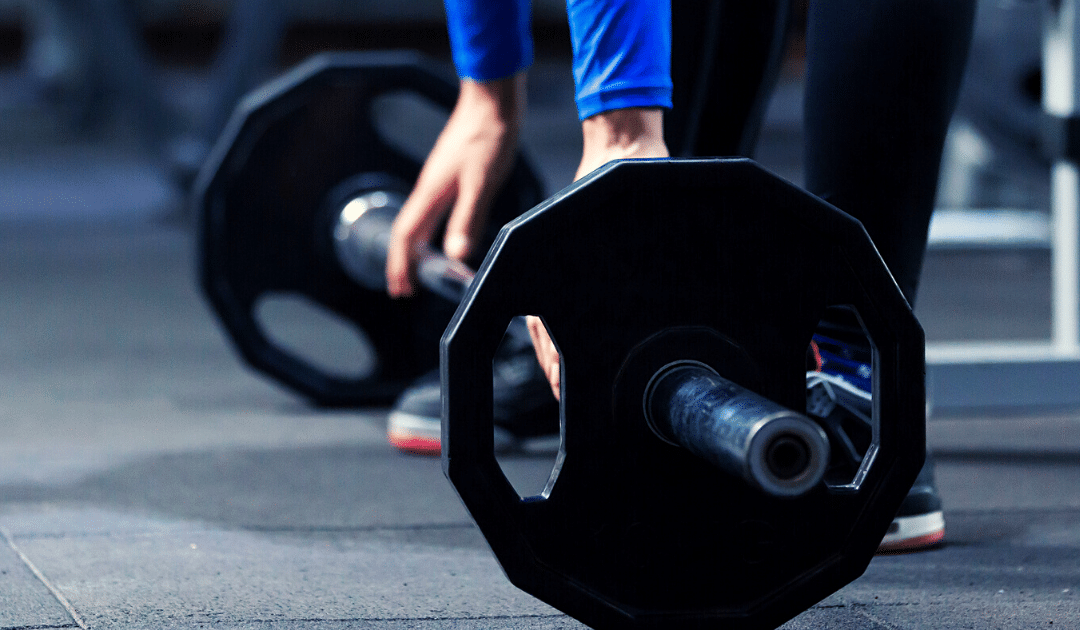
by California Casualty | Firefighters, Peace Officers |
It’s not easy being a first responder- EMS, Fire, Dispatch, LEO, etc. – it’s a rewarding career, but it can really take its toll on your body, physically and mentally.
Now, in the midst of a pandemic (and wildfire season), it is even more important than ever for first responders to take care of themselves and stay healthy.
Exercise is required for most first responders, and there are numerous health benefits. Here are 5 reasons why you should exercise frequently, especially during COVID-19.
Improves Health – It’s important for a first responder to stay in shape, and exercise is one of the best ways to lose fat and gain muscle. Regular exercise also helps manage and prevent many other underlying health conditions that make you more susceptible to the virus like: high blood pressure, diabetes, arthritis, strokes, and even cancer.
Reduces Stress – Mental health is just as (or arguably more) important as physical health, especially for first responders under a lot of pressure. When you exercise your brain releases endorphins that help you relax and decrease symptoms of anxiety, depression, and PTSD.
Improves Mood – Not only does exercise reduce stress, but it also boosts your mood, helping you stay on top of your game, even on a stressful day. A study found that only 20 minutes of exercise resulted in improvements in mood, both immediately and for up to 12 hours afterward.
Boosts Immunity – Physical activity produces compounds in your body that have the power to improve your immunity, decrease inflammation, and reduce viral respiratory infections, like ones found in COVID-19 suffers. This is very important for first responders who may be exposed to the virus on duty.
Enhances Cognitive Function – Regular exercise has been proven to reduce fatigue, improve alertness, and concentration, which are all vital attributes first responders need when responding to calls, especially those related to COVID-19.
If you are working out in a gym, even if it’s your own department’s gym, always remember to sanitize before and after equipment use and to maintain social distance when possible.
Stay healthy and be safe out there!
This article is furnished by California Casualty, providing auto and home insurance to educators, law enforcement officers, firefighters, and nurses. Get a quote at 1.866.704.8614 or www.calcas.com.
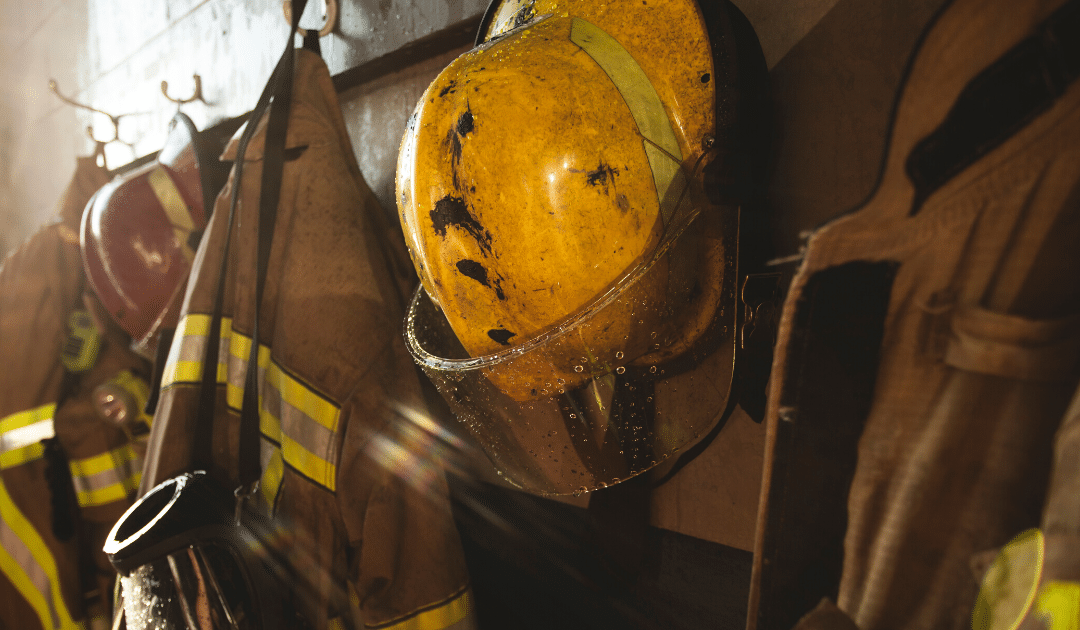
by California Casualty | Firefighters, Health, Peace Officers, Safety |
Summer heat is tough for anyone, but firefighters, peace officers, EMTs, and paramedics are at increased risk when heat’s extreme.
First responders are outdoors for extended periods of time, often in the sun. They’re also usually wearing heavy gear such as firefighting equipment, bulletproof vests (for officers), or other bulky protective equipment.
When these factors combine with elevated temperatures, heat stress can set in quickly. So it’s important for first responders and their departments to be well-versed in both the symptoms and best measures for prevention.
Heat-Related Illnesses: A Slippery Slope
Heat stress can progress from mild to life-threatening when symptoms aren’t addressed. Here are the main stages:
- Heat Cramps or Rashes – Caused by increased sweating, cramps, and rashes are the first sign of stress.
- Heat Exhaustion – At this stage, the body is overheating as a result of excessive loss of water and salt.
- Heatstroke – The most serious heat-related illness, heat stroke happens when the sweating mechanism breaks down and is no longer able to cool the body. Heatstroke can be fatal and requires immediate medical attention.
Signs of heat stress aren’t always obvious — brush up on the symptoms of the above conditions here.
Prevention
Preventive measures can be taken by first responders themselves, as well as their crew members, supervisors, and departments. The most successful heat safety protocols are adopted department-wide and include elements such as:
- Hydration – Staying hydrated is the most important tactic for preventing heat illness. Although first responders know the importance of hydration, it can easily be forgotten in the middle of emergency situations. Water should be made accessible at all times to first responder crews, with the encouragement to hydrate well and often.
- Knowing the signs – It’s important that both supervisors and team members know the signs of heat stress, both to self-monitor and to look out for their colleagues. Implementing a buddy system where partner pairs observe each other for signs of heat stress is also a good idea.
- Rest breaks – Rest periods are essential to ensure that workers can hydrate and cool down. They should occur more frequently when temperatures, humidity, or sunshine increases, when air is stagnant, during especially taxing work, and when workers are wearing protective clothing or gear.
- Cooling station – Especially when emergency calls are extended, a temporary set up where responders can retreat and take a rest is important. For instance, some fire stations supply their crews with trailers with a large fan and a mister; some have air-conditioned “rehab trucks” for firefighters on extended calls.
- Training – Before the hot weather begins, employers should provide heat stress training to all workers and supervisors so they’re better prepared. When possible, training should cover conditions specific to that work site or area.
- Heat alert program – When extreme heat is forecast, it’s important for employers and supervisors to implement a heat alert program, and ensure their workforce is safe and on the lookout.
- Acclimatization – First responders can become acclimatized to working in hot environments, gradually increasing their physical stamina and sweating proficiency. Acclimatization is achieved through evidence-based training programs provided by employers.
- Fitness — The risk of heat stress increases with obesity, high blood pressure, heart disease, lack of physical fitness, and certain medications. All the more reason for first responders to improve their diet and exercise where they can.
Finally, although not a factor in heat illness per se, extensive sun exposure over time increases skin cancer risk. A 2017 study in the Journal of the American Medical Association found that skin cancer risk in firefighters is greater than in the general population. Wearing (sweat-proof) sunscreen should be a daily habit.
This article is furnished by California Casualty, providing auto and home insurance to educators, law enforcement officers, firefighters, and nurses. Get a quote at 1.866.704.8614 or www.calcas.com.
by California Casualty | Behind the Scenes, Educators, Firefighters, Nurses, Peace Officers, Video |
day with firefighte
Together We CAN.
During these trying times, it’s important to know that you are not alone. You have a community of people behind you, encouraging and fighting for you.
Nurses, doctors, and other healthcare professionals are leading the fight on the frontlines against COVID-19, stepping up heroically in the face of incredibly long hours, heartbreaking care cases, and increased personal risk. Peace officers, firefighters, paramedics, and other emergency personnel are on the frontlines risking their own lives to keep our communities safe and in working order during this public health crisis. While teachers, school administrators, and education support professionals have completely changed their teaching strategies to accommodate students so they can stay safe at home and finish out the rest of the school year virtually.
We have never been more thankful for our everyday heroes than we are right now.
The coronavirus pandemic has turned our daily lives upside down, but when we come together as a community- as neighbors, as family, as friends -we are unstoppable. We CAN get through this and we WILL. Together we CAN.
We’d like to extend an extra special thanks to the Firefighters, Police Officers, Teachers, and Nurses who took the time to participate in our Together We CAN video. It is a privilege to hear about your daily experiences throughout the pandemic, firsthand. We appreciate your courage and dedication to helping keep us safe now, more than ever. Thank you.
This video is brought to you by California Casualty, providing auto and home insurance to educators, law enforcement officers, firefighters, and nurses. Get a quote at 1.866.704.8614 or www.calcas.com. Be sure to check out our Heroes series at https://mycalcas.com/leoheroesvideo/ or visit California Casualty’s YouTube Channel.
The Heroes Video Series was filmed and produced by Wide Awake Films.
If you’re not already following California Casualty, you can find us on Facebook, Instagram, Twitter, Pinterest, YouTube and LinkedIn.
At California Casualty, our mission is to provide trusted, personalized auto and home insurance protection. exclusively for educators, law enforcement, nurses and firefighters—those who protect, strengthen and enhance the quality of life in American communities.
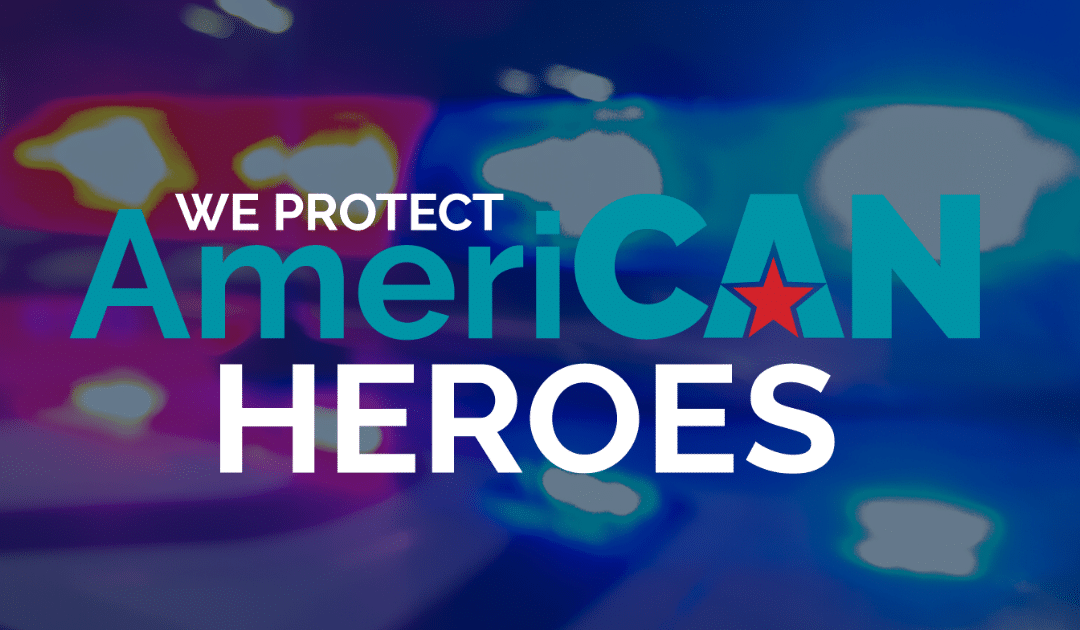
by California Casualty | Firefighters, Peace Officers |
Peace officers, firefighters, paramedics, and other emergency personnel are the American heroes on the frontlines of keeping our communities safe and in working order during this public health crisis.
They are working daily to ensure public safety, enforce laws, arrive first to emergencies, and provide reassurance to anxious communities. True to their sworn duty, they are stepping up to do what’s needed. Now is the time for the rest of us to step up and support them.
As cities and communities put plans in place to open their doors, here are 5 ways you can help your first responders.
Keep Your Distance
Across the country, various forms of shelter-in-place and social distancing orders will slowly be lifted. The basic idea of the orders was to limit exposure to others and ultimately, limit the spread of coronavirus infections. As life begins to return to it’s new “normal” it is important to remember to continue to keep your distance when out in public and avoid going out if you feel you are getting sick. By continuing to socially distance yourself in public and taking the necessary precautionary measures (like wearing a mask), you will help continue to slow the spread and you’ll also relieve officers’ time and energy in enforcement.
Don’t Abuse 9-1-1
Only call 9-1-1 if you, someone else, or property is in immediate danger. True emergencies include medical emergencies, violent crime, accidents, downed power lines, etc. Calls that are not actual emergencies overload the 9-1-1 system. That’s already an existing problem, and authorities worry it will escalate if the public health crisis continues, or gets worse, as cities begin to open their doors. If you have concerns about coronavirus symptoms that are not a medical emergency, contact your doctor or advice nurse.
Be Safe
Now is not the time for outdoor enthusiasts to put themselves in harm’s way by going rock climbing or wilderness hiking—even if it’s solo. Emergency evacuations and rescue cost resources and manpower. There’ll be time for adventures later; for now, follow the laws and be safe. Observe the speed limit, drive carefully, and be fire- and safety-conscious around your home. In short, remember that any emergency you create for first responders will strain their limited resources.
Call It In
If you need to report a non-emergency crime, file a police report, or add to an existing report, avoid going to the police station in person. Instead, submit your information online or over the phone. Avoiding walk-ins limit exposure risk to their ranks.
Be a Good Neighbor
Many of us know first responders and police officers personally. Whether they’re in your family, friend circle, or neighborhood, make a point to reach out and check-in. See if there’s anything you can do for them or their families. This could be something like dropping off food at the station, walking their dog, or just simply being someone to talk to. They have been and will continue to be overwhelmed—physically, mentally, and emotionally until this pandemic has resolved completely. Let them know you’re there for them.
Life will return back to normal, but to keep our first responder and healthcare systems from getting overwhelmed, it is important to remain vigilant on doing what we can to stay healthy and continue stopping the spread.
This article is furnished by California Casualty, providing auto and home insurance to educators, law enforcement officers, firefighters, and nurses. Get a quote at 1.866.704.8614 or www.calcas.com.





